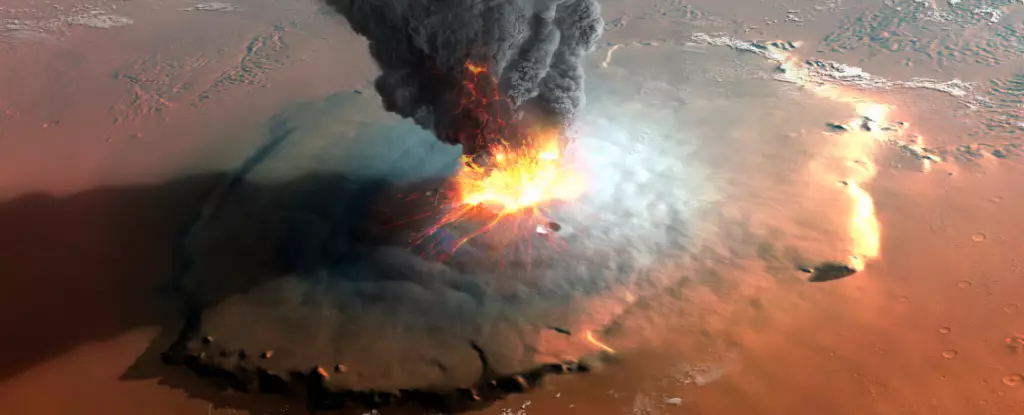Mars, often seen as a quiet and dusty planet, has actually had a remarkably violent history. This history could potentially provide us with valuable insights into Earth’s own past. A recent survey conducted by planetary scientist Joseph Michalski and his colleagues at the University of Hong Kong suggests that Mars was once littered with volcanoes, similar to what Earth experienced before the formation of tectonic plates billions of years ago. By examining the Martian surface in the planet’s Eridania region, using data from multiple orbiters, the team was able to identify the scars of volcanic activity. This discovery sheds light on the geological history of Mars and offers clues about how Earth’s crust might have formed.
Unlike Earth, Mars is generally considered a one-plate planet, lacking the interlocking continental plates that we see on our own planet. This means that Mars had active volcanoes in its youth, resulting in massive and explosive eruptions. The largest volcano on Mars, Olympus Mons, is 100 times larger in volume than Earth’s biggest volcano, Mauna Loa in Hawaii. This is because Mars’ volcanoes did not have tectonic plates to release the pressures of a churning mantle. Without the sliding and sinking of plates, the Martian crust has not undergone the same recycling process as Earth’s surface, making it an invaluable piece of the puzzle in understanding our own planet’s crustal evolution.
The researchers focused on the Eridania region of Mars due to its intensely magnetized crust and evidence of an ancient Martian sea. By analyzing the orbital data, Michalski and his team discovered various types of volcanoes within and adjacent to the Eridania sea. These included volcanic domes, stratovolcanoes, pyroclastic shields, and caldera complexes. The structure of these Martian volcanoes closely resembled those found on Earth today, but with slightly larger diameters. This is a result of Mars’ lower gravity and more explosive volcanism, which allowed materials to be thrown further afield. These diverse volcanoes, associated with felsic volcanic compositions unlike any other region on Mars, contribute to the uniqueness of the Eridania region.
In addition to the volcanic activity, the topography of the ancient Martian landscape provided further insights. The thickness of the volcanic deposits, the presence of warped and folded crust, and sagging basins indicated that Mars’ crust may have been slowly overturned by a precursor to plate tectonics known as vertical tectonics. This suggests that there could be hundreds more volcanoes in the Eridania region, many of which would have erupted beneath the ancient Martian sea. This parallel to Earth’s Archean period, when our planet was mostly covered in water and life was just beginning to emerge, adds to the fascination of this discovery.
Study author Aster Cowart, a planetary geologist at the Planetary Science Institute, expressed astonishment at the scale of activity in the Eridania region. The findings of Michalski and his team provide evidence of intense volcanic and geologic activity on young Mars, allowing us to envision a planet that was once vastly different from the one we observe today. By studying Mars’ violent past, scientists can gain a deeper understanding of Earth’s own geological history and the processes that shaped our planet.
The violent history of Mars, as revealed by the survey conducted by Joseph Michalski and his colleagues, holds significant value in unraveling the mysteries of Earth’s past. This newfound knowledge about Mars’ volcanic activity and lack of tectonic plates are instrumental in piecing together the puzzle of Earth’s crustal evolution. The Eridania region, with its unique composition and extensive volcanic activity, offers a glimpse into the early geological conditions of our solar system. The parallels between Mars and Earth during their respective early periods open doors for further exploration and research into the formation of life and the development of our planet. As we continue to unlock the secrets of Mars, we gain a deeper appreciation for the interconnectedness of celestial bodies in our universe.


Leave a Reply